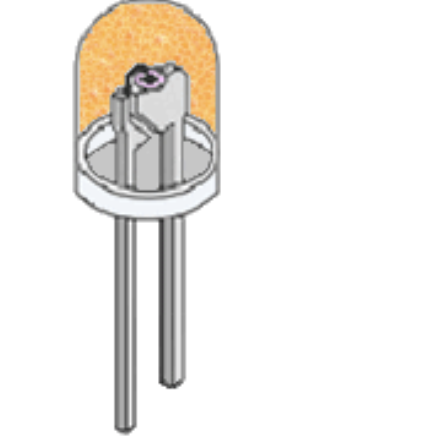How do common semiconductors operate?
In our last article, we checked out some of the different types of semiconductors. Now we’re going to have a look at how the common types of semiconductors operate.
Zener Diode

A normal p-n junction diode allows electric current in forward-biased condition. When forward-biased voltage is applied to the p-n junction diode, a large amount of electric current is allowed, with only a small amount blocked.
This means that a forward-biased p-n junction diode offers only a small resistance to the electric current.
When a reverse-biased voltage is applied to the same diode, it does the opposite by blocking a large amount of electric current and only allowing a small amount through. So, a reverse biased p-n junction diode offers a large resistance to the current.
If the reversed-based voltage applied is increased, a sudden rise in current occurs. A small increase in voltage will rapidly increase the electric current.
The sudden rise in electric current causes a junction breakdown called a zener or avalanche breakdown. The voltage at which zener breakdown occurs is called the zener voltage, and the sudden increase in current is called the zener current.
What is a zener diode?
A zener diode is a p-n junction semiconductor device designed to operate in the reverse breakdown region. The breakdown voltage of a zener diode is carefully set by controlling the doping level during manufacture.
A Zener diode has a larger percentage of doping than the normal p-n junction diode. It is described as having a very thin depletion region. Therefore, zener diodes allow more electric current than the normal p-n junction diodes.
Zener diodes allow electric current in the forward direction, like a normal diode, but also allow electric current in the reverse direction once the applied reverse voltage is greater than the zener voltage. Zener diodes are always connected in the reverse direction because they are specifically designed to work in the reverse direction.
The light emitting diode

Light-emitting diodes, or LEDs, are among the most widely used type of semiconductor diode. They are commonly used in TVs and colour displays.
They are the most visible type of diode, emitting a fairly narrow bandwidth of either:
- Visible light at different coloured wavelengths
- Invisible infra-red light for remote controls
- Laser-type light
They do one of these when a forward current is passed through them.
The LED is a specialised type of diode that has very similar electrical characteristics to a p-n junction diode. This means that an LED will pass current in its forward direction but block the flow of current in the reverse direction.

Light emitting diodes are made from a very thin layer of fairly heavily doped semiconductor material, and depending on the semiconductor material used, and the amount of doping, when forward biased, an LED will emit a coloured light at a particular spectral wavelength.
When the diode is forward biased, electrons from the semiconductor’s conduction band recombine with holes from the valence band, releasing sufficient energy to produce photons that emit a monochromatic (single-colour) of light. Because of this thin layer, a reasonable number of these photons can leave the junction and radiate away, producing a coloured light output.
Keep an eye out for our next article, where we’re going to cover more about semiconductors and their operations.
Interested in our courses?
You can read more about our selection of accredited online electrical and electronic engineering courses here.
Check out individual courses pages below:
Diploma in Electrical and Electronic Engineering
Higher International Certificate in Electrical and Electronic Engineering
Diploma in Electrical Technology
Diploma in Renewable Energy (Electrical)
Higher International Diploma in Electrical and Electronic Engineering
Alternatively, you can view all our online engineering courses here.
Recent Posts
Understanding and Calculating Generator Efficiency and Output Parameters
Understanding and Calculating Generator Efficiency and Output Parameters Introduction The performance of a generator is often judged by how efficiently it converts mechanical energy into electrical energy. Understanding and calculating this efficiency, along with other key output parameters such as voltage, current, power factor, and load, is essential for evaluating performance and ensuring reliable operation. […]
Essential Cooling and Protection Devices: How They Work and Why They Matter
Essential Cooling and Protection Devices: How They Work and Why They Matter Introduction Generators produce a significant amount of heat and electrical stress during operation, which can affect performance and lifespan if not properly managed. That’s where cooling and protection devices come in. These essential systems, including fans, radiators, circuit breakers, and relays, work together […]
Justifying the Choice of Generators Based on Requirements and Characteristics
Justifying the Choice of Generators Based on Requirements and Characteristics Introduction Selecting the right generator isn’t just about power output, it’s about finding a machine that meets specific operational needs, efficiency goals, and environmental conditions. Different applications demand different generator types, capacities, and features. In this article, we’ll explore how to justify the choice of […]

